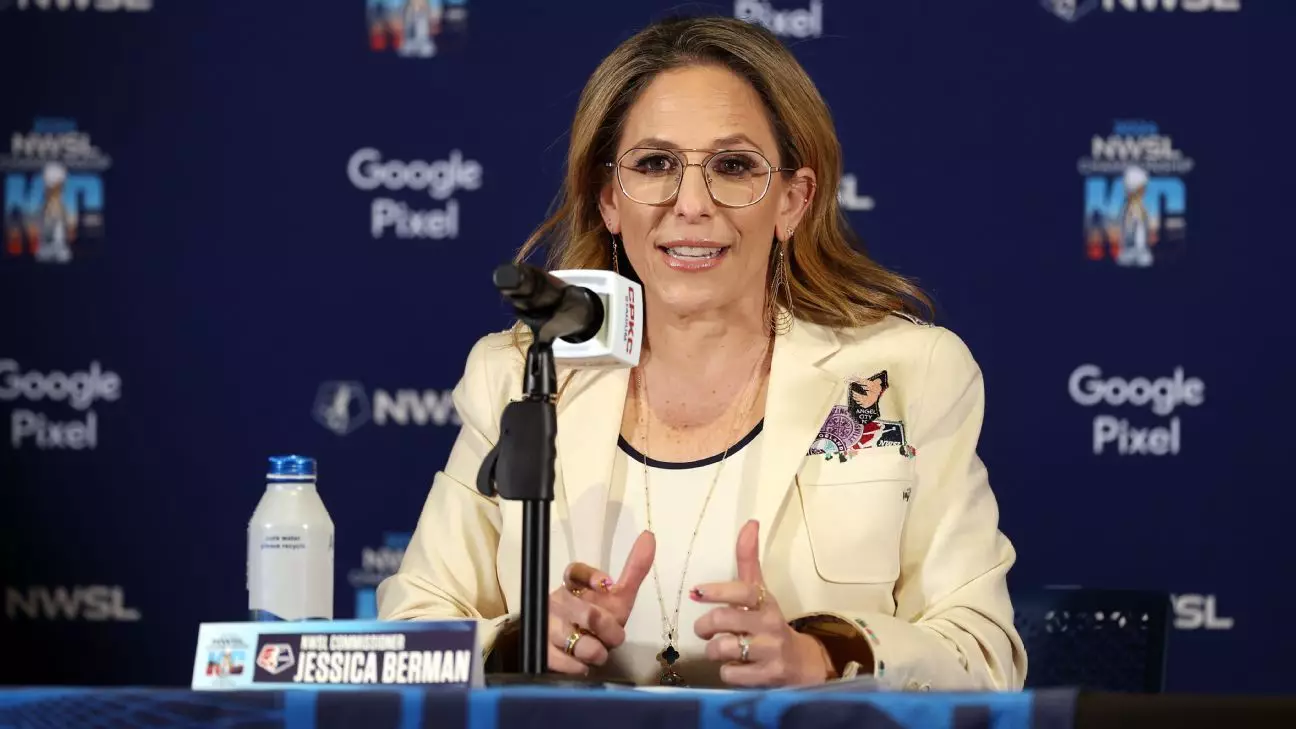The National Women’s Soccer League (NWSL) is on the brink of a transformative phase as it prepares to announce its newest franchise, rumored to be based in Denver. NWSL commissioner Jessica Berman confirmed that expansion efforts are far from complete, highlighting the enthusiasm surrounding the addition of new teams. With the league currently at 14 teams, adding the upcoming franchises will not only increase the number of participants but is also part of a broader strategic initiative to elevate the profile of women’s soccer across the United States.
The focus is clearly on growth. Berman reinforced that the league is “in active conversations” about future expansion, not just focusing on immediate additions but also discussing long-term strategies. As teams like BOS Nation FC prepare for their debut, NWSL is poised to reach 16 teams by 2026, reflecting a robust demand for women’s professional soccer.
Determining future expansion locations is essential to the league’s sustainability. Berman outlined three critical criteria that will guide the NWSL’s decision-making process. First, ownership plays a pivotal role; the league is looking for owners with both the financial capability and a long-term vision. This is crucial for ensuring not just the immediate success of new franchises, but also their viability over the long term.
Second, infrastructure cannot be overlooked. Berman emphasized the importance of having appropriate stadiums and training facilities—not just to meet current standards but to accommodate the league’s future ambitions. Having the right infrastructure will signal to fans, players, and sponsors that the NWSL is prepared for growth and competitive success.
Finally, while market potential is important, Berman noted that it is secondary to the aforementioned factors. The sheer size of the United States means there is latent potential in numerous cities. The rationale behind not allowing market size alone to dictate expansion decisions is refreshing and indicates a well-thought-out approach toward sustainability rather than immediate gratification.
As the NWSL evolves, it faces the challenge of transitioning away from traditional systems that have governed team formation and player mobility. With the elimination of the college draft and free agency, the league is navigating uncharted territory, a path for which there is limited precedent. Berman acknowledged that this transition is a learning curve for both technical staff and players alike; it disrupts the existing ecosystem that many have depended on.
This lack of a framework makes it complicated for teams and players to adjust. As institutions used to draft systems, organizations will need to adopt new strategies aimed at talent acquisition and retention. Moreover, players who are currently out of contract represent a further challenge that the NWSL must tackle. Developing mechanisms to place displaced players within the league or other opportunities will be crucial in fostering a thriving environment for all stakeholders.
Despite the myriad challenges ahead, the NWSL is positioning itself for a pivotal 2025 season that promises excitement and intrigue. With the recent announcement of a full schedule, featuring highlights like Rivalry Weekend and Decision Day, the league is not only ensuring competitive revelry but also nurturing a deeper connection with fans. Such events can galvanize support and increase viewership, leading to an enhanced experience for all involved.
As the NWSL builds momentum toward expansion and navigates the challenges of restructuring its player mobility system, one thing becomes abundantly clear: the league is serious about investing in its future. While obstacles loom, the NWSL has seized an opportunity to reshape its landscape and is taking proactive measures to align its growth with a long-term strategy. With new franchises, a redefined operational framework, and a commitment to recognizing the role of ownership and infrastructure, the NWSL is on an exciting trajectory toward greater prominence in the world of sports. The coming years should reveal whether this strategic approach will pay off in establishing a sustainable future for women’s soccer in America.

